In the modern automobile industry, the quality and precision of parts are more important than ever before. The machining level of precision parts and the development of automobile stamping technology has become an important driving force for the development of the automobile industry. For the precision parts machining in the automobile field, the core of the whole factory process lies in the four major heads of stamping, welding, spraying and assembly. It is the most critical equipment in the precision parts machining of the automobile, and also the priority among priorities in the intelligent machining of the automobile
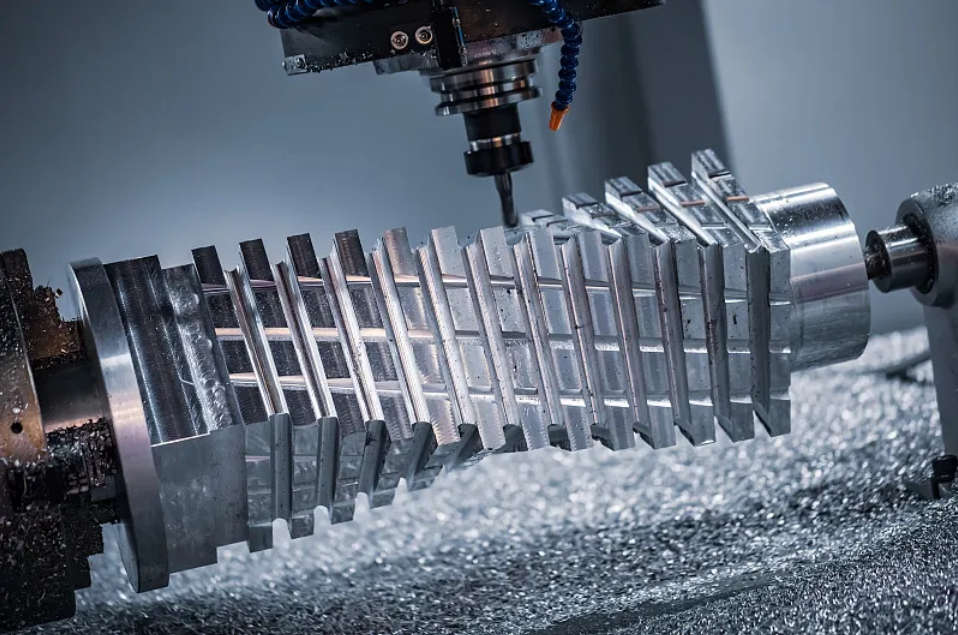
At present, the automatic stamping production line that has been put into production is basically the standard five-axis industrial intelligent CNC machining equipment. Compared with the recent seven-axis robot, the five-axis intelligent precision parts machining cost is lower. Whether in flexibility, or later maintenance, five axis intelligent processing has very advantages, but the stamping process needs 180 degrees of horizontal rotation, which leads to a higher standard of intelligent precision parts processing movement complexity, so seven axis robot technology can overcome these problems well.
Precision parts machining technology has made great progress in automation, production efficiency, product accuracy and quality. Now many enterprises have begun to use intelligent manufacturing technology to improve enterprise productivity. Through the introduction of intelligent equipment, we can realize flexible production and meet the personalized customization requirements of customers. The modern automobile industry, through the machining of precision parts and automobile stamping technology, is increasingly successful in achieving “customization in mass production”.
Basic introduction to precision parts machining and automotive metal stamping
Precision parts machining and automobile metal stamping are very important technologies in various fields of industrial manufacturing. Whether you are in manufacturing, aerospace, medical devices or other industries, these technologies are needed to produce high-quality, high-precision parts and components.
Precision parts machining
Precision parts machining usually refers to the manufacturing process of fine machining on non-standardized materials. It covers areas such as aviation, electronics, biomedicine, textile and automobile industries. Many mechanical parts and components are involved in the manufacturing process of automobile industry, some of which need precise control of size and quality. Precision parts machining can meet the high requirements of precision, quality and stability of the automobile industry, to ensure the quality and size of parts to achieve extreme accuracy.
Precision parts machining can also be used in prototyping and model development of automobile parts. In the process of vehicle prototype design, it is necessary to verify and test the design scheme by making small batch models quickly. Using the technology of precision parts machining, the required model can be made quickly, and the high level of accuracy and performance can be guaranteed for the actual production of products.
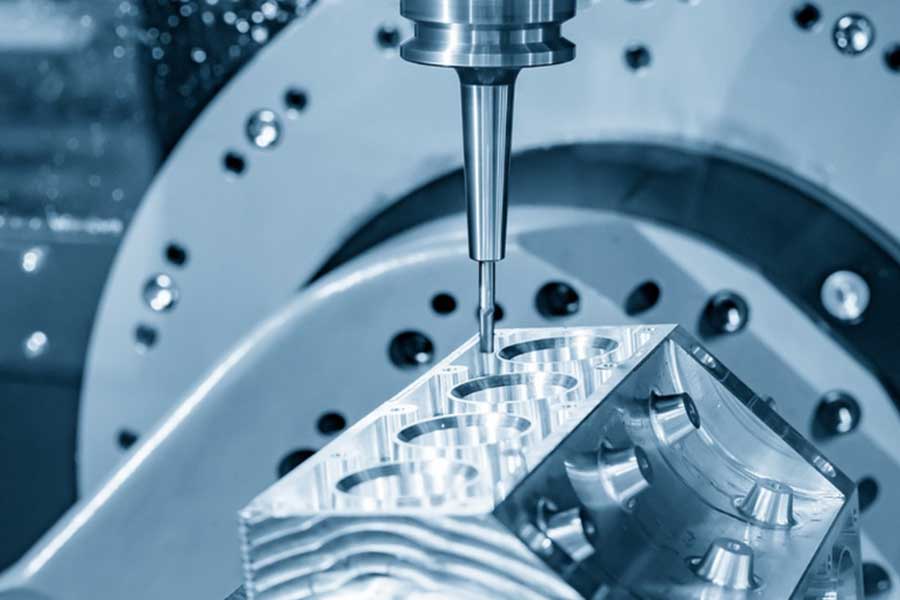
Automobile metal stamping
Automotive metal stamping is a manufacturing process in which a sheet metal is formed with a pressing tool. It involves the raw material and finished product machining of metal materials, as well as the assembly process of parts. In the process of automobile production, die casting process can be widely used in body, chassis, engine cover and other large parts as well as small parts, such as bracket, buckle, etc.
Compared with other manufacturing techniques, automotive metal stamping has many advantages. First, metal materials are easy to work with and can easily form various shapes. Secondly, it can mass-produce high-quality auto parts and reduce production costs. Finally, automotive metal stamping can also increase production efficiency and can produce parts of various shapes and sizes according to specific requirements, making the production process more flexible and efficient.
Working principle and process flow
Principle of precision parts machining
Precision parts refers to the size and shape of very accurate mechanical parts, through machining, heat treatment and other ways, the workpiece machining into high precision, more complex shape parts or components, process requirements must be high precision, high precision shape requirements, good quality requirements, high complexity and complex structure, at the same time the operation of fine, high precision, high efficiency. machining equipment commonly used include: CNC machine tools, large industrial CNC engraving machine, large cutting machine, grinder and other kinds of precision machining equipment, these parts in automobile manufacturing, the common precision parts include engine parts, transmission parts and transmission shaft.
Precision parts machining process
Precision parts are usually processed by cutting and discharge machining in two ways. The cutting includes turning, milling, drilling and so on, and the discharge machining uses electric spark discharge or laser melting, as follows:
Precision parts machining methods
cutting
Cutting is one of the traditional precision machining methods. It is a machining method to cut unnecessary materials through cutting the workpiece to achieve the required size and accuracy. In cutting, turning, milling, drilling and grinding are common methods.
turning
Turning is a common machining method that works by placing the workpiece on the lathe and cutting it by rotating the workpiece. When CNC turning on a lathe, the cutter rotates on the workpiece and cuts the desired shape and size. By controlling parameters such as the car’s feed, cutting speed and depth, the cutting process can be adjusted to produce the desired accuracy and surface quality.

milling
CNC Milling is a method of machining by placing a workpiece in a milling machine and making straight or annular cuts on its surface. Milling can be used in machining plane, groove, CAM, gear and other shapes of parts. During milling, the tool is rotated and fed in the desired cutting mode, cutting material off the workpiece and forming the desired shape and size.
drilling
Drilling is a kind of tool loaded on the spindle, as a rotary cutting tool, it through the cutting spindle drill to remove the material inside the workpiece. Drilling is often used to make small holes, through the wall and other machining.
grinding
Grinding is a type of machining in which the desired shape and size is finally achieved by grinding the workpiece while removing the material. Grinding requires the use of fixed cutting tools for fine machining, commonly used grinding tools include grinding wheel, grinding wheel, abrasive belt, emery cloth, drill and grinding machine, etc., which can be used to process high hardness materials and complex workpieces.
Electric discharge machining
Discharge machining is a machining method that uses discharge, electric spark or laser melting to remove the material on the workpiece surface and form the desired shape. Discharge machining technology is often used on difficult materials and complex shape workpieces. In discharge machining, the electrode and the workpiece are placed opposite each other and a voltage or charge is applied between them. When the voltage or charge reaches a certain level, the current passes through the electrode and the workpiece to generate a discharge, causing partial reactions such as dissolution or evaporation, and forming the desired shape.
Different machining methods of the process flow
In turning, milling, drilling and other cutting machining, the first need to choose the right tools and tools. For parts of different shapes, materials and sizes, different tools and tools need to be selected to ensure machiningg efficiency and accuracy. For precision parts machining, it is usually necessary to use high speed steel or other materials of super hard cutting tools and tools, which can better ensure the machining accuracy and surface quality.
For different workpiece machining, also need to carry on different cutting mode selection. For linear and circular arc machining, continuous feed mode is usually adopted, while for circular arc machining, interpolation control mode is needed to achieve smooth machining. At the same time, also need to carry on the appropriate feed speed and cutting depth control, to ensure the machining efficiency and machining accuracy.
In discharge machining of EDM or laser melting, it is necessary to adopt pretreatment technology and optimize machining parameters to ensure accuracy and surface quality. The pretreatment process includes pulse energy, electrode machining, electrolyte concentration and temperature control, etc. As for the setting of machining parameters, including machining voltage, pulse width, pulse interval and so on. By optimizing these parameters, the machining efficiency of EDM discharge or laser melting can be improved, and the machining accuracy and surface quality can be guaranteed.
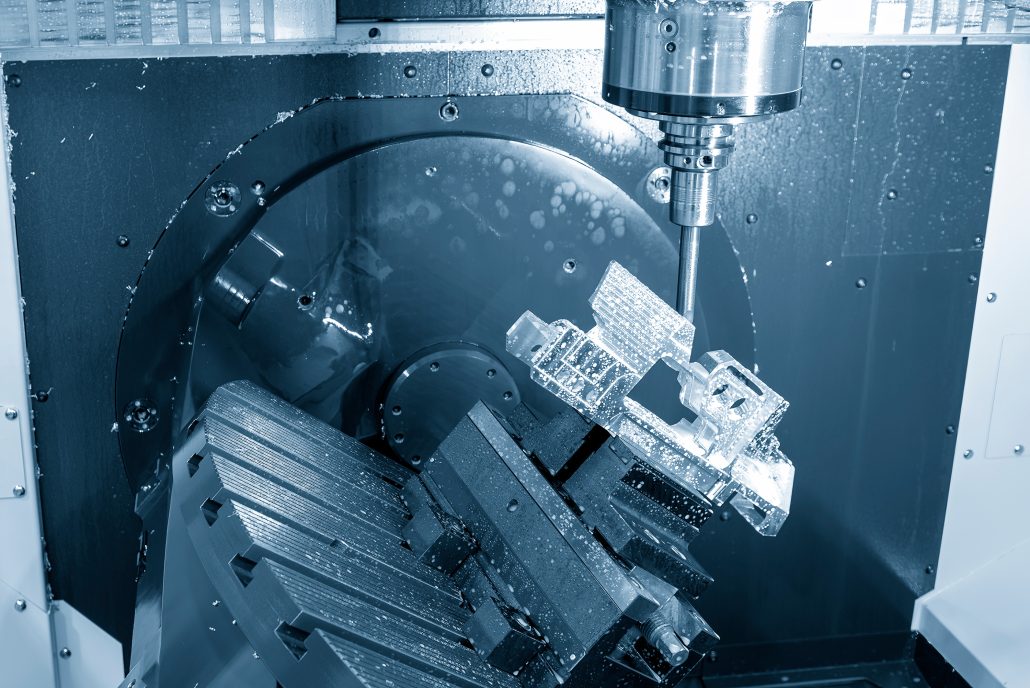
Principles of automotive metal stamping
Automobile metal stamping refers to the process by which sheet metal is processed into the desired shape in the stamping die. Its principle is mainly to use the mechanical force of the punching machine to process the material into the desired shape. The stamping machine is mainly composed of frame, slider, die and transmission device. In the operation of the punching machine, the sheet is first placed between the molds, and under the action of mechanical forces, the sheet is processed into the desired shape. Different stamping dies can be processed into metal parts of different shapes.
Automotive metal stamping process
The process flow of automobile metal stamping includes: material preparation, mold design, cutting, opening, punching, bending, forming, wrapping, shaping, machining, welding, surface treatment, assembly, etc. The details are as follows:
Material preparation
Material preparation is the first step in stamping. The choice of automobile material has a crucial influence on the quality of the product. In the selection of materials, the appropriate material and thickness should be selected according to the specific model and its requirements.
Mold design
Die is a key part in the process of stamping, its design and manufacture directly affect the quality of product forming and production efficiency. In the mold design, need to consider the material property, shape, process requirements and other factors, to develop a reasonable design scheme.
cutting
Cutting is to cut the plate according to the shape and size of the auto parts into the corresponding size of the workpiece, which is provided to the punching machine for the next step of forming machining. The precision and quality of cutting are related to the accuracy and efficiency of stamping forming, so professional cutting equipment and technology should be adopted, and the necessary quality detection and control should be carried out.
opening
Opening is the necessary process before blanking, mainly in the plane part of the parts out one or more round, square or shaped window or hole, so that the back of the blanking process for forming. The position, size and shape of the opening shall be connected with the next stamping process to ensure the quality and size of the final product.
blanking
Blanking is the core process of automobile metal stamping, which is often realized by punching machine, fitter machine tool and other equipment. Blanking is the use of a die to impose a certain stamping force, the plate is stamped into the required shape, size and number of parts, with high production efficiency, stable quality, low cost advantages.
bend
Bending is the bending and forming of the plate, usually completed by bending machine, pipe bending machine and other equipment. The purpose of bending is to make the plate into the desired three-dimensional shape to meet the automobile’s requirements for appearance, space and function. The precision and quality of bending should be adjusted and controlled according to the actual requirements.

forming
Forming refers to stamping the sheet into parts that have the desired curved shape, such as doors, roofs, hoods, etc. Forming machine tools must be used, such as tensile machine, spinning machine and other equipment, with high precision, high efficiency, high flexibility and so on.
wrapping
Wrapping is the edge treatment of parts for aesthetics and ease of installation. When wrapping, different methods such as clipping, vulcanization and sewing are usually used. Appropriate methods should be chosen according to the actual situation.
shaping
Shaping is to adjust and finish the convex part and concave part of the parts to ensure the smoothness and geometry of the finished product. Shaping can be used in manual shaping, hydraulic shaping and mechanical shaping and other different ways.
machining
machining is the further machining and machining of parts, such as sheet metal fabrication, cutting, drilling, tapping, riveting, etc. Machining should be according to the actual need to choose the appropriate technology, and ensure the machining accuracy and quality requirements.
welding
Welding is to connect different parts by welding. The welding of body parts usually adopts MIG welding, TIG welding, spot welding and so on. Before welding, appropriate welding process parameters should be determined according to the material and welding form of the parts to prevent welding deformation, cracking and other problems.
Surface finishing
After automobile metal stamping is completed, surface finishing is needed to make the product achieve a certain gloss and rust resistance. In the surface treatment, usually using spraying, baking paint, electroplating and other methods for treatment.
assemble
Assembly is the last step after stamping and the most critical step in the production process of a car. The assembly process should be carried out in strict accordance with the production plan and assembly process to ensure the assembly quality and duration.
Equipment and tools
Automobile metal stamping needs to use a variety of equipment and tools, such as punch, mold, cutting machine, welding machine, etc. Among them, punch is the core equipment of stamping, die is one of the key tools. In addition, ruler, caliper, gauge and other precision measuring tools need to be used to ensure the machining accuracy.
The machining of different materials
Different materials require different machining methods. For automobile parts with iron, sheet metal stamping, welding, polishing, chrome plating and spraying can be used. Aluminum alloy materials are usually processed by riveting, bonding and plastic forming.
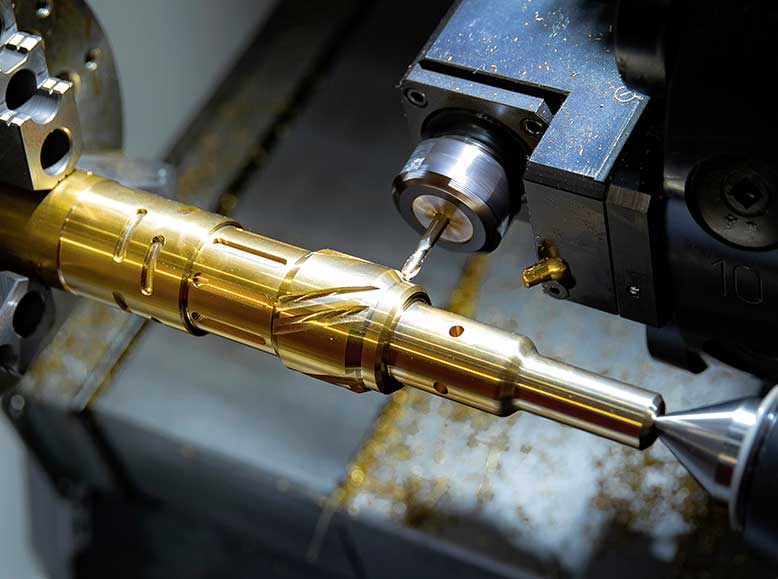
Compared with precision parts machining, what are the advantages of automotive metal stamping
In the automobile manufacturing industry, compared with precision cnc parts machining, it has many advantages, including low cost, quality assurance, durable and other aspects, as follows:
Low cost
The cost of metal stamping technology is much lower than that of precision parts machining technology. This is due to the fact that metal stamping technology can perform multiple operations at once, such as punching, blanking, bending, stretching, etc. These operations can be done on the same machine without the need for multiple machining steps, which greatly reduces production costs. In addition, the metal stamping process allows for higher production efficiency in mass production, thus reducing unit costs.
Good formability
Automobile metal stamping can be based on different needs, to a variety of materials for rapid, efficient, in line with the process requirements of the forming process. This characteristic of good formability can provide diversified product choices for automobile manufacturing enterprises.
Quality assurance
Metal stamping technology can ensure the high quality of auto parts manufactured. This is due to the high precision operation of the metal stamping machine, which is able to manufacture the precise size of the auto parts. In addition, the metal stamping process can be completed in a single process, so as to reduce errors and deformation, ensure the integrity and consistency of parts.
durable
Car parts need to last long before they are out of operation. In this regard, metal stamping technology has a distinct advantage because it uses steel plates to create stronger and more durable auto parts. This is more durable than parts made by other machining methods.
Compared with automobile metal stamping, what are the advantages of precision parts machining
The machining of precision parts on modern automobiles is more accurate and complex than that of general metal stamping. The machining methods and technologies used in precision parts machining have some obvious advantages compared with automobile metal stamping technology, as follows:
Higher precision and adjustability
Precision parts machining has many advantages over traditional automotive metal stamping, the most significant of which is higher precision and adjustability. In the traditional metal stamping process, the process and die are limited, so it is difficult to achieve more precise manufacturing. However, in precision parts machining, a variety of advanced tools and machines can be applied, such as robotic arms and CNC machine tools, which are capable of accurately machining any complex shape and fine features. Moreover, the materials processed by precision parts are more diversified, including titanium alloy, ceramics, stainless steel and tungsten steel, etc., which are difficult to be processed by traditional stamping process.
Improve manufacturing efficiency
Another advantage of precision parts machining over traditional manufacturing processes is increased manufacturing efficiency and reduced costs. In traditional manufacturing, large materials and molds take a long time to set up and process. But in precision parts machining, smaller and more diverse materials and equipment can be made at the same time, allowing more parts to be produced more quickly. And because of the higher machining accuracy, reduce the waste in the manufacturing process.
Higher product quality and sustainability
It can be predicted that, because of the use of modern advanced machinery and equipment, precision parts machining will be more efficient, less waste means higher product quality. In addition, strict quality control practices ensure accuracy and consistency of parts, which further enhances product sustainability.
Material optional
Automotive metal stamping usually requires the use of materials, such as steel, making manufacturing parts costs low. However, this method may not be suitable for some materials, such as copper, aluminum or titanium alloy. In contrast, precision parts machining can be used to process different types of materials, thus providing more options.
Both precision parts machining and automobile metal stamping are indispensable technologies in modern manufacturing industry. They can all be used to produce high quality, high precision automotive parts and components. In addition, both methods require the use of high-precision machines and equipment to ensure that parts and components meet strict specifications and requirements.
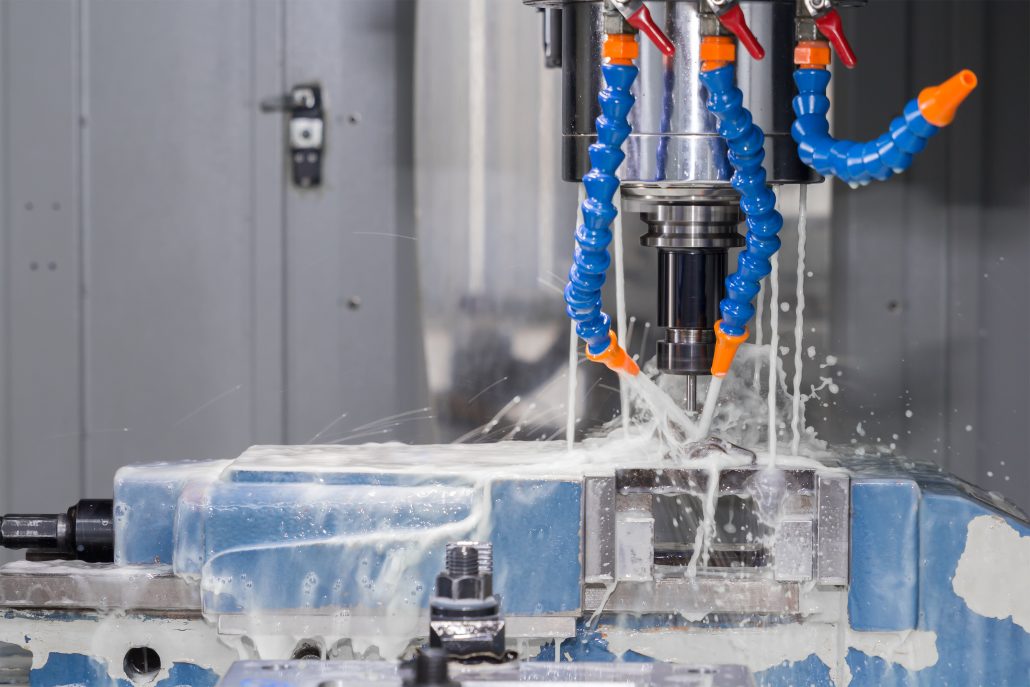
Precision Parts Machining and Automotive metal Stamping: How do I choose the right process for my Project
Know the services you need
First, you need to determine what kind of service you need. Here are some ways to start:
Size and shape: What is the size and shape of the part you need?
Materials: What materials do you need to process? What special properties does this material need to have?
Quantity: How many parts do you need?
Time: When do you need to get these parts?
Once you have identified these issues, you can start looking for suitable parts machining and metal stamping services.
Understand the technology and process of the service provider
Before choosing a parts machining and stamping service provider, you need to understand their techniques and processes.
Parts machining technology: What parts machining technology does your service provider use?
Insert process: Is insert process important for your project?
Choice of materials and alloys: Whether the types of materials and alloys used in the project are limited or differ significantly in quality and strength.
These questions can be answered by talking to the supplier’s engineers.
Selection technique
Now, let’s look at how to choose the right process for your project. There are several aspects to consider when choosing the right process:
- Product quality
- Technological complexity
- Production efficiency
- Cost control
If you need to produce parts with high precision and complex structure, then precision parts machining is the best choice. Its advantage is to ensure the high quality, high precision and high stability of the parts.
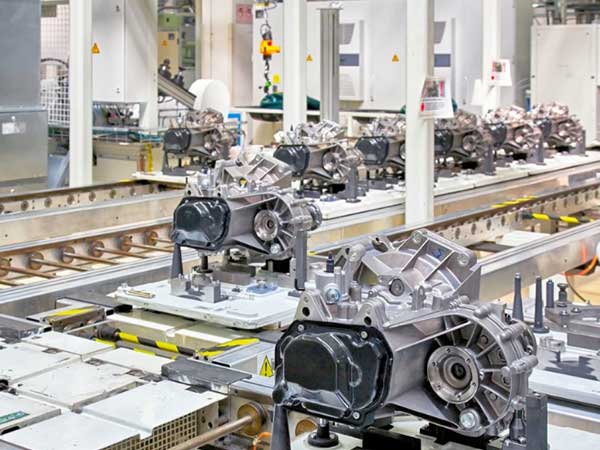
For the production of a large number of simple parts, automotive metal stamping is the first choice. The stamping process can produce a large number of parts efficiently with high economy.
In addition, process complexity is also a factor to be considered when selecting a process. Precision parts machining requires more complex equipment, requires a high level of operational skills, production efficiency is relatively low. The automobile metal stamping process is relatively simple, easy to realize automatic production, production efficiency is high.
Also to consider is the precision and type of materials your project will require. If your project requires high precision parts, then precision parts machining is your best choice. If your project requires mass production of parts, automotive metal stamping may be more suitable for your needs.
And whether your equipment and people have the skills and capabilities to perform the required processes. Precision parts machining requires highly skilled and experienced workers, high-precision equipment and materials, while automotive metal stamping requires more machine operations and workers to maintain production efficiency.
Finally, you need to consider the cost of the process and the quality of the finished product. Precision parts machining is usually more expensive than automotive metal stamping, but it is more accurate, so it may be an advantage to choose precision parts when producing high-precision parts. In contrast, the cost of metal stamping for cars is lower, but the quality of the finished product is also more mediocre.
Before choosing an appropriate machining method, you will need to make a thorough assessment of the specific requirements of your project to determine the type of process you need and the quality of the finished product you need.
Hopefully this article will help you better understand precision parts machining and automotive metal stamping and help you choose the best process for your project
Longsheng Technology


